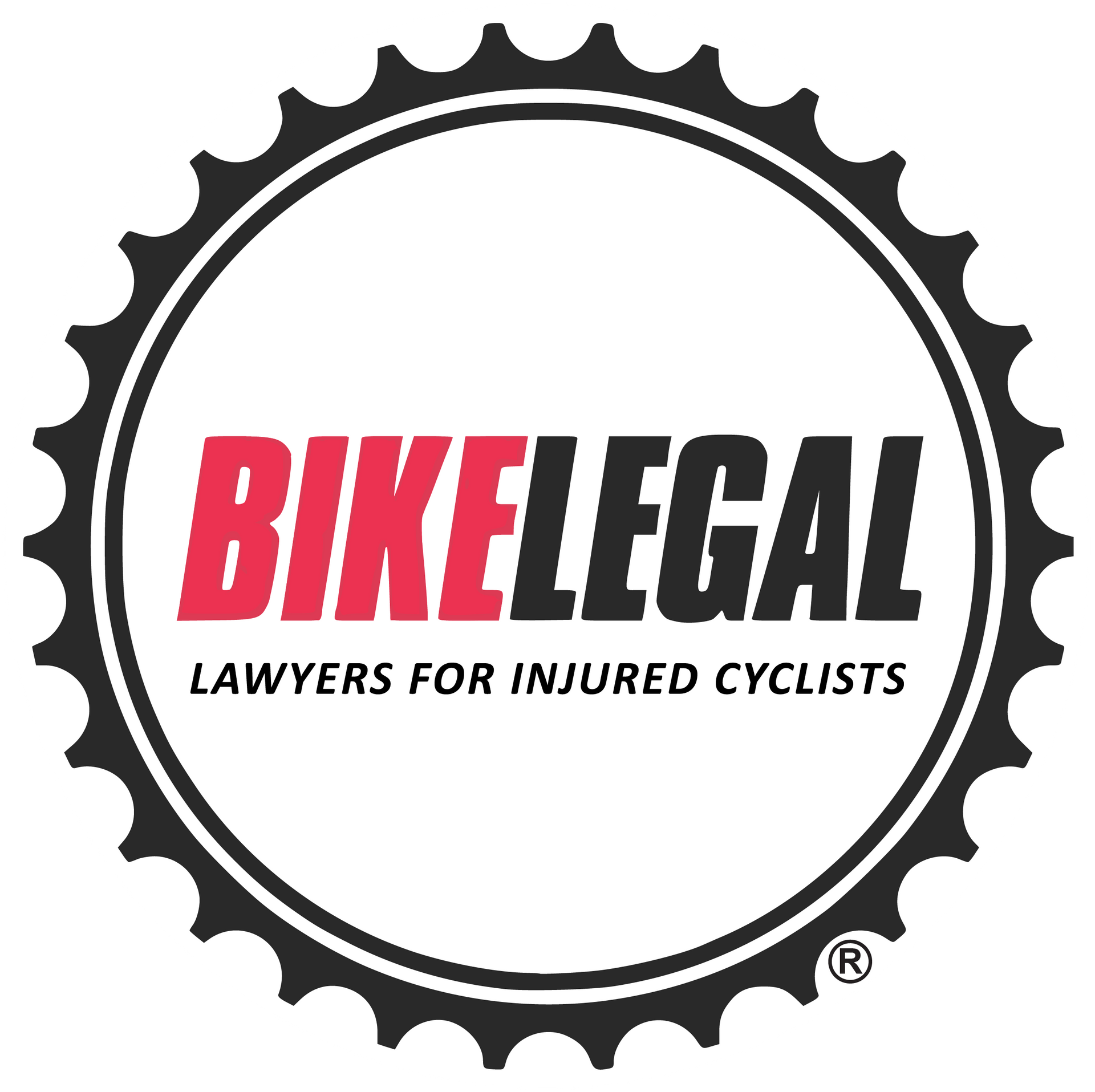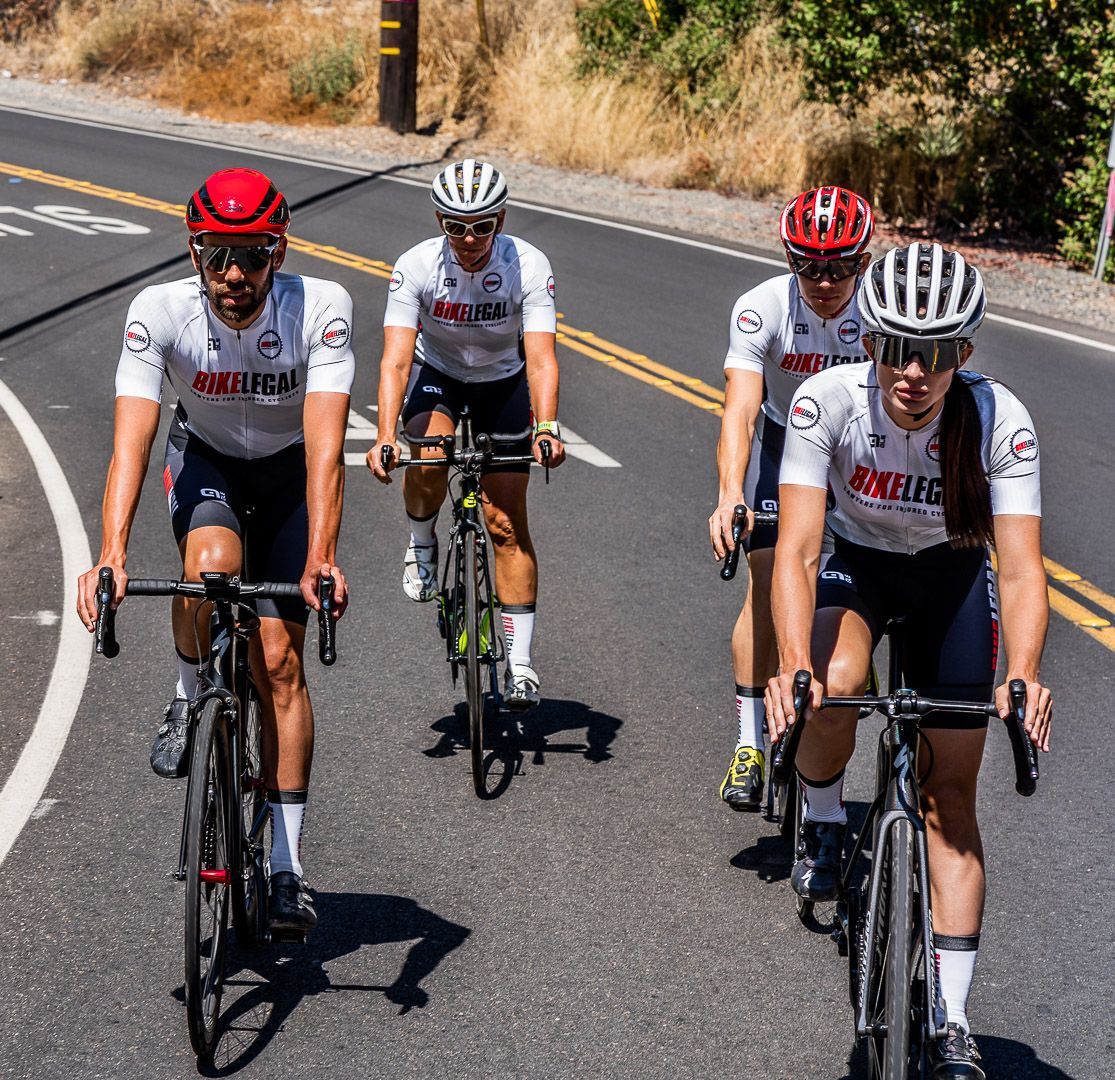How to Become a Faster Cyclist: Pro Training Tips to Boost Speed & Endurance
Follow us on
social media!
Every cyclist wants to get faster, but simply riding more won’t necessarily get you there. Speed isn’t just about effort—it’s about efficiency, training strategy, and recovery. Whether you’re aiming to crush a local climb, not get dropped on the group ride, or compete at a higher level, knowing how to become a faster cyclist requires a structured approach.
This guide breaks down proven methods to boost endurance, build power, and maximize every training session—without overtraining or burning out. From interval workouts to strength training, indoor cycling strategies, and proper nutrition, we’ll help you unlock your full potential on the bike.
What You’ll Learn:
- Smarter Training & Recovery – How to maximize every ride and avoid overtraining.
- Fueling for Performance – Nutrition strategies to sustain energy and improve endurance.
- Tech & Tools – The best gear, apps, training plans, and techniques to track progress and get results.
Let’s dive into the strategies that will help you ride stronger, faster, and more efficiently.
1) Set Effective Goals

Want to ride faster? Start with a clear plan. Without structure, training becomes guesswork. A well-defined goal keeps you motivated, helps track progress, and ensures every ride has a purpose.
The type of goals you choose will depend on your cycling discipline and what you are training for.
Why Goals Matter
- Goals provide structure—eliminating the "just ride and hope" approach.
- Goals increase focus—helping you target specific areas like endurance, average speed, or bike handling.
- Goals boost motivation—because nothing feels better than hitting a milestone.
SMART Goals Framework
Vague goals lead to vague results. Instead of saying, “I want to get faster,” make it SMART:
- Specific – Define what you want to improve (e.g., speed, endurance, power).
- Measurable – Use data (e.g., power meter, average speed, cadence) to track progress.
- Attainable – Set a challenging but realistic target.
- Relevant – Align goals with your cycling ambitions, whether it’s racing, endurance, or fitness.
- Time-Based – Give yourself a deadline.
Example SMART goal: Increase average speed by 2 mph over 3 months by following a structured interval training plan and tracking progress with a heart rate or a power meter.
Types of Goals
- Short-Term – Weekly mileage targets, mastering HIIT for cyclists, or improving cadence.
- Intermediate – Completing a metric century, hitting a new power output, or finishing a Zwift training plan.
- Long-Term – Preparing for a race, improving cycling endurance for a 100-mile ride, or conquering a major climb.
Control What You Can
Many riders chase results they can’t control—like winning races. Instead, focus on the process:
- Performance Goals – Improve cadence, increase power output, or lower rolling resistance.
- Process Goals – Stick to a weekly cycling training plan, optimize recovery time, or refine bike handling skills.
2) Build Fitness with a Balanced Training Plan
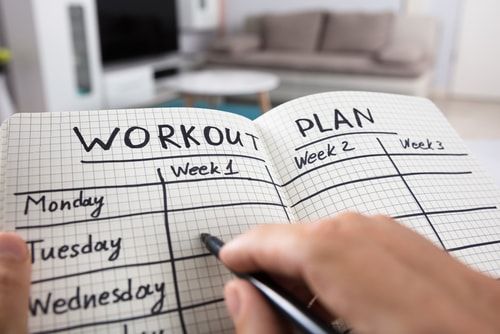
More miles don’t always mean better results. If you’re wondering how to become a better cyclist, consistency and structured training are key to improving speed and endurance.
Time-Efficient Training
Don’t have endless hours to train? You don’t need them. Short, focused sessions—especially high-intensity interval training (HIIT) for cyclists—can drive major improvements in endurance, power, and average speed.
- 30- to 45-minute workouts can be just as effective as long rides if structured correctly.
- Morning, evening, or commute-based rides help fit training into a busy schedule.
- Indoor cycling on smart trainers for cyclists allows for controlled, efficient sessions.
Sample Weekly Cycling Training Plan
- Monday – HIIT session (short bursts of high speed, power output, and low gear recovery)
- Tuesday – Strength training (targeting leg muscles, core, and upper body for bike stability)
- Wednesday – Recovery ride (easy pace to reduce fatigue and speed up the recovery process)
- Thursday – HIIT session (a mix of high-intensity efforts and rest for interval training benefits)
- Friday – Rest or active recovery (stretching, light yoga, or mobility work)
- Saturday – Long endurance ride (building cardiovascular fitness and stamina)
- Sunday – Strength training or rest (depending on fatigue levels)
Want to improve efficiency? Learn about professional bike fits and how they enhance your performance.
3) High-Intensity Interval Training (HIIT)
Want to know how to be a faster cyclist without spending more hours on the bike? HIIT training delivers maximum results in minimal time.
What Is HIIT?
HIIT (high-intensity interval training) pushes your body into short bursts of all-out effort, followed by structured recovery. It’s the fastest way to boost your average cycling speed, endurance, and power output.
Example HIIT workout:
- 30-second sprint (high speeds, harder gear)
- 90-second recovery (low gear, easier pace)
- Repeat for 6-8 intervals
Why It Works
- Increases cardiovascular fitness – Forces your heart and lungs to work harder in less time.
- Boosts power output – Builds leg strength and muscular endurance for sustained efforts.
- Improves cycling performance – Whether it’s a longer ride, a climb, or a sprint, HIIT prepares you for high-intensity efforts.
Incorporating HIIT into Your Training
To maximize results without overtraining, aim for 2-3 HIIT sessions per week:
- Speed Focus – Choose a reasonably flat stretch to work on sprints.
- Power Focus – Hill repeats for climbing strength.
- Endurance Focus – Longer intervals (e.g., 2-5 min hard efforts) for better stamina.
4)Track Your Cycling Performance with the Right Devices
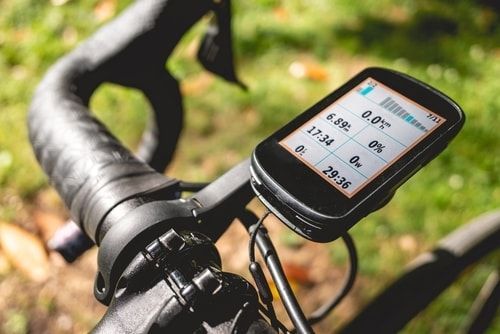
Accurately tracking your cycling performance requires more than just estimating speed and distance—it’s about measuring key metrics like heart rate, power output, and cadence. Investing in a Garmin watch or a Wahoo bike computer can take your training to the next level by providing real-time data and in-depth performance analysis.
Garmin and Wahoo are the leading brands for cycling computers and smartwatches, offering the most accurate tracking for serious cyclists. These devices sync with heart rate monitors, power meters, and cadence sensors, giving you precise insights into your effort and progress. With features like GPS navigation, performance monitoring, and post-ride analytics, they help optimize your training and ensure you’re making measurable improvements.
5) How Indoor Cycling Can Help You Become a Faster Cyclist
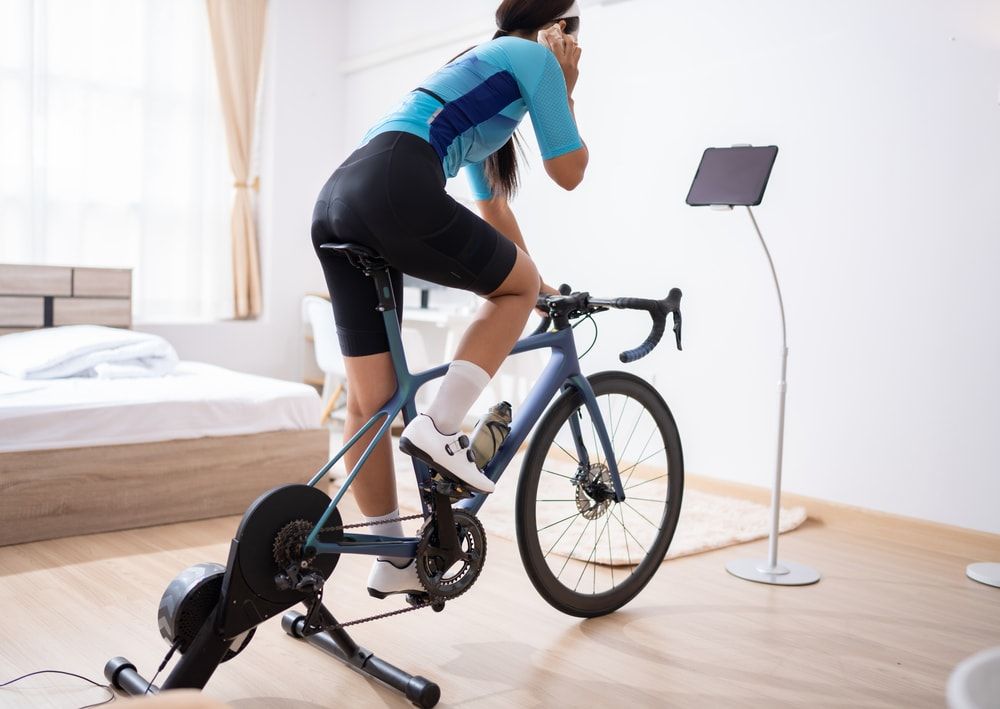
Cold weather and shorter days can make it difficult to stay consistent with training. But skipping rides all winter can set back your fitness. Incorporating indoor cycling into your training can significantly improve your speed and endurance by allowing for structured, uninterrupted workouts that focus on key performance metrics.
Here’s how:
- Precision Training – Indoor cycling eliminates external variables like traffic, wind, and terrain, enabling you to focus on specific intensity levels, cadence, and power output.
- High-Intensity Intervals (HIIT) – Indoor sessions make it easier to execute interval training, which is one of the most effective ways to build speed and endurance.
- Consistent Workouts – Unlike outdoor rides, where weather and road conditions can limit training, indoor cycling provides a year-round training solution, keeping you on track even in winter.
- Better Efficiency & Time Management – With no coasting or stops, every minute on the bike is productive, making indoor cycling a time-efficient way to boost your performance.
Top Indoor Cycling Apps
- Zwift – A popular virtual cycling platform that combines structured workouts, group rides, and competitive racing in an interactive, gamified environment.
- TrainerRoad – A data-driven training app focused on power-based interval workouts, structured training plans, and performance analysis.
- Wahoo X/SYSTM – An all-in-one training platform offering cycling workouts, strength training, yoga, and mental preparation for a well-rounded fitness approach.
6) Strength Training for Cyclists
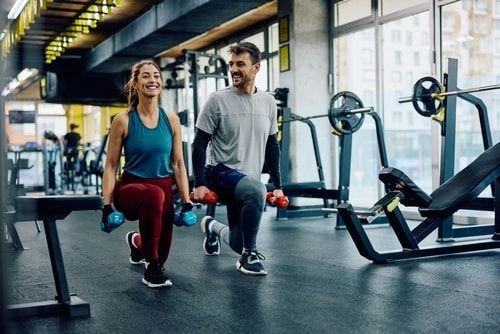
If you want to know how to become a stronger cyclist, try adding strength training. A well rounded strength training plan builds total-body strength, boosts power output, and helps prevent injuries—keeping you riding stronger and more efficiently.
Why Strength Training is Essential for Cyclists
- More power, less fatigue – Strong leg muscles generate more force with less effort, improving cycling performance.
- Better bike handling – A stable core and upper body help with aero position, balance, and control, helping you save energy, reducing aerodynamic drag, and improving average cycling speed.
- Fewer injuries – Strengthening key muscle groups reduces overuse injuries and imbalances.
Key Exercises
- Squats – Build lower body power for high speeds and harder gear efforts.
- Lunges – Improve leg endurance and balance for smoother pedaling.
- Deadlifts – Strengthen core stability and posterior chain muscles for more speed.
- Planks – Improve core strength for better aero position and endurance cycling.
- Pull-ups – Develop upper body strength to stabilize your bike during climbs and sprints.
Scheduling Strength Training
Adding just 2-3 sessions per week can significantly improve power, average cycling speed, and overall performance.
- Recovery days – Light strength work to support the recovery process.
- Easy ride days – Combine a short, comfortable pace ride with strength work.
- Off-season training – More focus on strength training, shifting to maintenance mode during peak cycling months.
🚴♂️ Pro Tip: Use resistance bands or bodyweight exercises if you’re short on time or don’t have access to a gym. Even small improvements in strength can translate into more speed on the bike.
7) Nutrition and Hydration
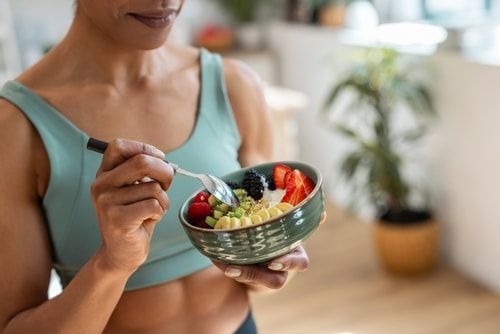
Your legs can only push as hard as your fuel allows. Whether you want to become a faster cyclist, get better at climbing, or build endurance, proper fueling is essential to sustaining energy and preventing fatigue.
Fueling Your Training
Cycling demands slow, steady energy, so timing your nutrition is key.
- Pre-Ride (3-4 hours before) – Prioritize carbohydrates to top off glycogen stores. Oatmeal, rice, or whole-grain toast with nut butter works well.
- During Rides (90+ minutes) – Consume 30-60g of carbs per hour to maintain energy and avoid bonking. Think energy gels, bananas, or sports drinks.
- Post-Ride – Focus on protein and carbs to aid muscle recovery. A protein shake, eggs with toast, or Greek yogurt helps replenish depleted stores.
What is Bonking During Cycling?
Bonking, also known as "hitting the wall," happens when a cyclist depletes their glycogen stores, leading to sudden fatigue, dizziness, and a dramatic drop in performance. It’s caused by not consuming enough carbohydrates before or during a ride.
Hydration Basics
Even a 2% drop in hydration can reduce power output. Stay ahead by drinking a full bottle per hour and increasing intake in hot conditions or high-intensity efforts.
- Before a ride – Start hydrated. Drink 500ml of water with electrolytes.
- During a ride – Drink every 10-15 minutes, adjusting for sweat rate and cycling in the heat.
- After a ride – Rehydrate with electrolytes to replace lost sodium and minerals.
Boost Performance with Nutrition
What you eat off the bike matters just as much as what you consume during training.
- Nitrate-rich foods (beets, spinach, arugula) improve blood flow, helping deliver more oxygen to muscles.
- Lean proteins (chicken, fish, tofu, eggs) support muscle repair and endurance.
- Reduce alcohol – It slows recovery, impacts hydration, and affects hormone balance.
🚴♂️ Pro Tip: Experiment with nutrition strategies in training—not on race day. What works for one cyclist may not work for another.
8) Recovery Practices

Training makes you stronger—but only if you recover properly. Without rest, your body breaks down, performance stalls, and fatigue creeps in. Recovery isn’t just about taking a day off—it’s an active process that builds muscle. This is when the magic happens!
Active Recovery
Your body doesn’t become stronger during hard rides—it happens afterward when muscles repair and adapt. The right recovery methods speed up this process.
- Easy spins – Light, low-intensity rides (zone 1 and zone 2) keep blood flowing and aid muscle repair.
- Stretching & mobility work – Improves flexibility and reduces stiffness.
- Yoga or breathwork – Helps relax the nervous system and improve muscle recovery time.
Sleep: The Ultimate Recovery Tool
No amount of protein or stretching can replace lost sleep. Poor sleep = slower speed, more fatigue, and a higher risk of injury.
- Aim for 8+ hours of quality sleep to maximize muscle repair and performance.
- Stick to a schedule—consistent sleep patterns improve recovery and endurance.
- Avoid screens, caffeine, and alcohol before bed for deeper, uninterrupted rest.
Post-Ride Recovery Tips
What you do in the first 30 minutes after a ride can affect your recovery process.
- Foam rolling & massage – Helps break down muscle tension and improve blood circulation.
- Stretch major muscle groups – Focus on leg muscles, core, and upper body for better flexibility.
- Refuel properly – Replenish glycogen stores with carbs and protein (e.g., a smoothie, eggs with toast, or a protein shake).
- Showering promptly after your ride helps prevent saddle sore issues.
🚴♂️ Pro Tip: Hydrate immediately post-ride to replace lost fluids—especially in hot conditions or after intense sessions.
9) Training Plan Options by Cost
Not all training plans require a big budget. Whether you’re looking for a free DIY approach or a fully personalized coaching plan, there’s an option to fit your goals and wallet.
1. Free Options
If you’re self-motivated and enjoy structuring your own workouts, free resources can help you build an effective training plan.
- Strava (Free Version) – Track rides, analyze performance, and join challenges.
- TrainingPeaks – Log workouts and monitor progress with a simple dashboard.
- YouTube & Cycling Blogs – Many pros and coaches share beginner cycling training plans for free.
🚴♂️ Best for: Cyclists comfortable with self-guided training who don’t need structured workouts.
2. Paid Plans ($15-$30/month)
These online training plans offer pre-designed, data-driven programs tailored to your fitness level. These structured plans help optimize training without the cost of a personal cycling coach.
- Training Peaks - Training plans for athletes of all abilities written by expert coaches.
- Bicycling Training Plans - Wide variety of training plans
- Cycling Weekly Training Plans- Training plans that provide structure and motivation for all levels.
- TrainerRoad: Custom adaptive cycling training plans that refine strengths and target weaknesses.
🚴♂️ Best for: Riders who want affordable cycling training with structure and data feedback.
3. Hiring a Coach ($100-$500/month)
A cycling coach provides fully customized plans, feedback, and goal setting for serious cyclists who want to achieve maximum performance gains.
- Personalized weekly cycling training plans based on actual progress.
- One-on-one feedback on performance progress aimed at specific goals.
- Adjustments based on recovery time, power output, and race preparation.
🚴♂️ Best for: Elite or Competitive cyclists
10) Lifestyle Adjustments for Better Cycling
Becoming a faster cyclist isn’t just about riding more—it’s about building consistent habits that support long-term progress. From managing your time better to maintaining motivation, small lifestyle tweaks can make a significant difference in your cycling performance.
Time Management
Finding time to train is one of the biggest challenges cyclists face. The key? Consistency.
- Prioritize short, effective sessions – A 30-minute HIIT for cyclists session is better than skipping a workout.
- Use commuting as training – Ride at a comfortable pace or push harder for an extra challenge.
- Become a morning rider – Training before work ensures you get it done—no excuses.
🚴♂️ Pro Tip: If you wait until later in the day, life is sure to get in the way.
Mental Health and Motivation
Cycling isn’t just good for your fitness level—it’s a powerful tool for mental health.
- Reduces stress and improves mood – The rhythmic motion of legs pedaling combined with fresh air or even indoor cycling releases endorphins.
- Creates a sense of achievement—Hitting milestones, such as a higher cadence, longer ride, or improved cycling speed, keeps motivation high.
- Social rides keep it fun – Joining a cycling club, whether a local outdoor club or a virtual community like Zwift. Group rides help build accountability and keep motivation high.
Sustainable Habits for Long-Term Success
Burnout happens when training isn’t balanced with recovery. The goal isn’t to train the hardest—it’s to train smart and consistently.
- Follow a balanced diet – Prioritize cycling nutrition and hydration for better endurance and recovery.
- Respect the recovery process – Listen to your body, schedule rest days, and use cycling recovery tools like foam rollers or massages.
- Stay flexible – Some weeks will be harder than others. If you miss a ride, don’t stress—just get back on track.
🚴♂️ Pro Tip: Small, consistent improvements over time lead to big gains. Focus on progress, not perfection.
Common Mistakes to Avoid While Training to Become a Faster
Even with a solid training plan, poor habits can slow progress and hinder performance. Avoid these common mistakes to stay on track and improve efficiently.
1. Overtraining
More miles don’t always mean better results. Training too hard, too often, can lead to fatigue, slower speeds, and increased injury risk.
- Signs of overtraining: Persistent exhaustion, declining power output, lack of motivation, and slow recovery.
- Solution: Schedule rest days and recovery weeks, listen to your body, and prioritize sleep and nutrition.
🚴♂️ Pro Tip: Skipping recovery will set you back faster than missing a workout.
2. Inconsistent Training
Random rides lead to random results. Without structure, progress will be slow and unpredictable.
- Training without a plan? You won’t see steady improvements.
- Going too hard, too fast? Burnout and injury are likely.
Solution: Stick to a structured cycling training plan, even if it’s just three well-planned sessions per week.
3. Nutrition & Hydration Mistakes
Even the strongest cyclists can’t perform well on poor fueling habits. Proper nutrition and hydration are key to sustaining energy and improving endurance.
- Not enough carbs? You’ll experience energy crashes mid-ride.
- Skipping protein? Muscle recovery slows, affecting long-term progress.
- Dehydrated? Even a small drop in hydration reduces power output and endurance.
Solution: Fuel properly before, during, and after rides. Consume a balance of carbs for energy, protein for recovery, and electrolytes to maintain hydration levels.
🚴♂️ Pro Tip: Experiment with nutrition strategies during training, not on race day, to find what works best for your body.
Conclusion
Becoming a faster cyclist doesn't happen overnight—it requires a commitment to consistent, structured training over weeks and months.
Start today:
- Set a clear goal—whether it’s increasing your average cycling speed, completing your first century, or competing in your first race.
- Try HIIT for cyclists—short bursts of high speeds deliver big fitness gains in minimal time.
- Add Indoor cycling to achieve consistency —platforms like Zwift, TrainerRoad, or Wahoo SYSTM keep you engaged and accountable.
Whatever your fitness level, start where you are and build from there. Join a cycling community, experiment with a weekly cycling training plan, or consult a coach for personalized guidance. The most important step? Just start.
Ride Protected, Ride Safe with Bike Legal
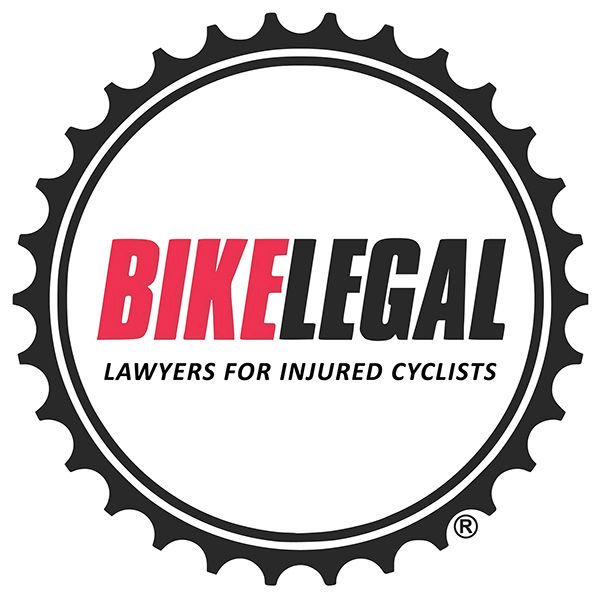
Cycling comes with risks, and when accidents happen, you need a legal team that understands what it means to be a cyclist.
At Bike Legal, we fight for injured cyclists, ensuring they get the compensation and justice they deserve. But we’re more than just a bicycle accident law firm—we’re advocates for safer roads and stronger cycling communities.
If you’ve been injured in a bicycle accident involving a motorist, don’t navigate the legal process alone. Contact Bike Legal for a free consultation—let us handle the legal side so you can focus on getting back on the bike.
📞 Call 877-BIKELEGAL (877-245-3534)
FAQ's
1. How do pro cyclists get so fast?
Pro cyclists follow structured training plans that include interval workouts, endurance rides, strength training, and optimized recovery. They also track performance using power meters and heart rate monitors, focus on aerodynamics, and fuel their bodies with proper nutrition to sustain high performance.
2. How can I increase my average cycling speed?
To increase your average speed, focus on interval training (HIIT), strength workouts, and improving pedaling efficiency. Using a power meter or cycling computer can help track progress, while aerodynamics and bike positioning also play a key role in maintaining higher speeds with less effort.
3. Is indoor cycling good for improving speed?
Yes! Indoor cycling eliminates external variables like wind, traffic, and terrain, allowing for precise interval training and structured progression. Using platforms like Zwift or TrainerRoad, combined with smart trainers, helps cyclists improve power output and endurance for real-world speed gains.
4. How to get better at cycling up hills?
To improve climbing ability, focus on low-cadence strength training, hill repeats, and endurance rides. Increasing leg strength with squats and lunges can also boost climbing power. Using a power meter helps track improvements in sustained effort on climbs.
5. How to become a stronger cyclist overall?
Becoming a stronger cyclist requires a mix of endurance rides, interval training, and strength workouts. Incorporating core stability exercises improves bike handling and efficiency, while proper nutrition and recovery ensure consistent progress without burnout.
